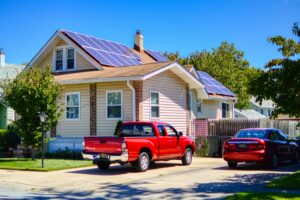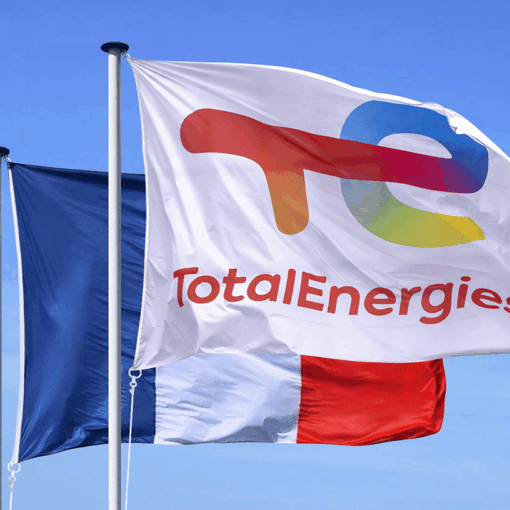
Building codes have a major influence on how local governments respond to climate change. They prescribe enforceable requirements for the materials that buildings are made of, for how living and working spaces are designed, and critically, for what kinds of environmental possibilities new buildings must be prepared to accommodate. For example, a new edition of the International Energy Conservation Code (IECC), a model building code currently under development, would require a range of measures aimed at ensuring new buildings can accommodate on-site solar PV, provide electric vehicle charging, and take advantage of demand-response programs.
Requirements like these can help reduce the costs of the energy transition: retrofitting a residential building to add electric vehicle charging infrastructure after construction is complete can quadruple the cost of building the same charging access when the building is new. But the decision to include these sections in the latest draft of the IECC has generated sharp disagreement among trade associations, local governments, and energy efficiency advocates. So much so that the latest draft of the IECC is now subject to nine appeals being argued in a quasi-judicial process that has included briefing on the issues, public comment, and a sort of oral argument at a series of day-long hearings.
The stakes are high: whatever version of the code emerges from the appeals process is likely to become law in much of the United States at some point over the coming years. And the precedential impact of the appeals may buoy (or stymie) building electrification efforts for far longer, as codes that encourage or discourage electrification and energy efficiency measures are enshrined until a state or local jurisdiction next re-assesses its code.
The ICC’s Model Codes Under State Law
The actual building codes enforceable in a given U.S. jurisdiction are set under state or local law. Most states and local governments adopt model building codes developed by the International Code Council (“ICC”), a nonprofit group that publishes model residential and commercial building codes on a range of issues with input from local government officials, industry groups, consumer advocates, and environmentalists. The ICC’s model codes are enormously influential, often being adopted in whole or with limited exceptions as enforceable state or local law, though at times these jurisdictions adopt or have on the books a version of the IECC that is one or more code cycles out of date. As a result, the ICC’s code development process includes a host of quasi-legislative commitments that aim to increase transparency in the process by emphasizing public participation, due process, and consensus, and that allow for appellate review of draft outcomes before they become the published model code.
That process is underway for the latest update of the IECC. The 2024 IECC sets energy conservation requirements for new buildings, including heating, ventilation, lighting, water heating, and power usage. It was developed over the course of several years by ICC-managed Consensus Committees (one Residential, one Commercial) composed of representatives of ICC’s various stakeholders. The Consensus Committees review hundreds of proposals for measures to include in the code submitted by the public, and ultimately votes as a committee on which will comprise the final draft of the model code. This process, notably, was a change from the one used for prior updates to the code—a change that some have criticized as diluting the power of state and local government officials that used to enjoy significant authority over the final code drafts adopted.
The proposals that the Committees ultimately selected include a set of forward-looking provisions that could go a long way to advancing climate change mitigation and adaptation. Those are, among several others, provisions sometimes requiring demand response equipment for HVAC, lighting, and service water heaters (R403.5.5; C403.4.6; C404.10; C405.2.8); requiring infrastructure ready to accommodate electric vehicle charging in new residential buildings (R404.7); requiring outlets suitable for electric appliances near ones that are currently using fossil fuels (R404.5); and requiring electrical energy storage systems or reserved areas for future installation of those systems in some commercial buildings (C405.16).
After the Consensus Committees voted to finalize the draft 2024 IECC, the ICC announced a deadline to appeal the draft that many have argued came as a surprise, and that allowed industry group representatives to file appeals of both procedural and substantive issues to the ICC. The ICC accepted the appeals and sent them straight to its Appeals Board, contrary to its internal policy that appeals should first be discussed by the Consensus Committee.
The Arguments
The appeals all raise substantially similar challenges. The several core arguments described here are ones that raise concerns with far-reaching impact on subsequent iterations of the IECC and other climate-adaptation related codes.
First, industry groups including the Building Owners and Managers Association International, National Multifamily Housing Council, American Gas Association, and the American Public Gas Association, argue that certain new electrification measures are outside the scope of what the IECC should address. Preliminary sections of the code (R101.3) were developed internally by the ICC and provided that the code will include “requirements for buildings that result in the maximum level of energy efficiency that is safe, technologically feasible, and life cycle cost effective,” and that the code “may include non-mandatory appendices incorporating additional energy efficiency and greenhouse gas reduction resources.” A subsequent ICC memo—published during development of the 2024 IECC, but nearly two years before the committees voted on the final draft code—clarified that “[a]ny content within the scope and intent of the code may be included either in the body of the code as minimum requirements or as an adoptable appendix based on the determination of the responsible Consensus Committee.”
The appellants argue that electrification is not the same as energy efficiency because energy efficiency mandates do not require fuel switching, whereas electrification does. Fuel switching, the argument goes, is an additional “greenhouse gas reduction resource” which—if it is included at all—should be clearly designated as an optional add-on provision that a jurisdiction need not adopt along with the body of the code. Responding groups generally argue that all parties had the same ICC guidance on what could be included in the code throughout the process, and that under that guidance the committee reached a consensus decision to adopt what is now the draft code. So, the responding parties conclude, “[s]ince the process was followed fairly and correctly, all of the final language on EV charging infrastructure should remain in the 2024 IECC.”
Second, on appellate procedure, responding parties argue that the ICC is violating its internal policy by improperly extending its deadline to appeal, by sending appeals directly to a quasi-judicial Appeals Board without first giving the code-developing committees a chance to consider the issues, and by accepting appeals on technical issues, which they say are outside the appropriate scope of the Appeals Board’s review. That was all done, the arguments go, to pander to the special interests of the industry groups that submitted the appeals. The ICC itself has responded that the deadline to appeal was ambiguous, so an extension to include the latest plausible deadline was necessary to preserve fairness in the process; that the items being appealed were already been debated by the committees, so giving them another chance to debate “would be unproductive” and “unlikely to result in the withdrawal” of the appeals; and that whether then issues that critics of the process called technical (and thus beyond the Appeals Board’s purview) were in fact beyond the scope of review is a matter for the Board itself to decide.
A third issue concerns the process of handling public proposals and developing the draft code. During the code development process a member of the Residential Committee observed that a handful of proposed code provisions had received the simple majority vote needed to pass a preliminary stage of review but would not garner the two-thirds vote needed to become part of the final draft. So she convened side forums to seek a workable compromise, and ultimately secured agreement to propose to the whole committee a package of code provisions—including, critically, several of the contentious readiness sections. That package, now derisively termed the “omnibus proposal,” was presented to the whole committee and passed with a final vote of 38 in favor 9 opposed.
Critics of that process argue that members of the committee should have had the chance to vote on each part of the final code on its own, that measures within the package would have failed individually, and that the side meetings diminished the opportunity for stakeholder input. Writing in her own defense, the member that proposed these forums points out that all voting members of the committee were invited to participate, and the final proposal that resulted was presented to the full committee in line with ICC procedure, discussed in an open and transparent way, and passed a fair vote.
The Stakes
Whether the most hotly contested code provisions are ultimately included will have a significant impact on the cost of electrification down the road. As a general matter, an analysis of an early draft of the 2024 IECC by the Pacific Northwest National Laboratory found that the code overall would reduce building’s energy use by about 6.5%. The same analysis found huge cost savings associated with the specific proposals at issue in the current appeals, the potential to vastly decrease peak energy demand by including demand-response controls, and sharp decreases in carbon emissions available from electric vehicle charging space and equipment in residential buildings. If these provisions become the final code and are well-enforced, they will significantly lower the cost to homeowners to transition to electric appliances and electric vehicles, likely leading to reductions in overall carbon dioxide emissions.
And it would be a mistake to overlook the importance of the procedural issues under review. The ICC has been criticized as captured by the interests of homebuilders at the expense of energy efficiency. Whether the ICC’s late communication of a deadline for appeals is ultimately deemed a legitimate clarification of ambiguity or a rule-breaking exception to facilitate industry appeals will affect the extent to which the public accepts ICC’s quasi-judicial overtures to fairness in its proceedings. The procedural issues have already led at least one member of the Consensus Committees to threaten to abandon the process altogether for future updates to the code. Closely related, the ability of members to hold side-forums and present packages of code provisions built from consensus will have a significant impact on how individual provisions enter the code in the future. If, as industry groups have suggested, every provision must always be voted on separately, the ability of less-resourced stakeholders to band together to advocate for passage of efficiency-focused provisions may be diminished.
* * *
State and local governments will have the last word on whether to adopt the code that comes out of these appeals—they can adopt more stringent provisions than are in the model code if they choose. But the vast extent to which governments adopt model codes as enforceable law suggests that the outcome of these appeals will shape the requirements for electrification in new buildings for years to come. Moreover, they may well influence the process through which later versions of the IECC are negotiated and adopted. The appeals process merits close attention from anyone interested in the role of building codes in local climate action.
Update: On March 18, 2024 the ICC Board of Directors partly affirmed the appeals, moving the contested code provisions described above into nonmandatory appendices.
Dan Metzger is a Senior Fellow with the Cities Climate Law Initiative at the Sabin Center for Climate Change Law at Columbia Law School.





